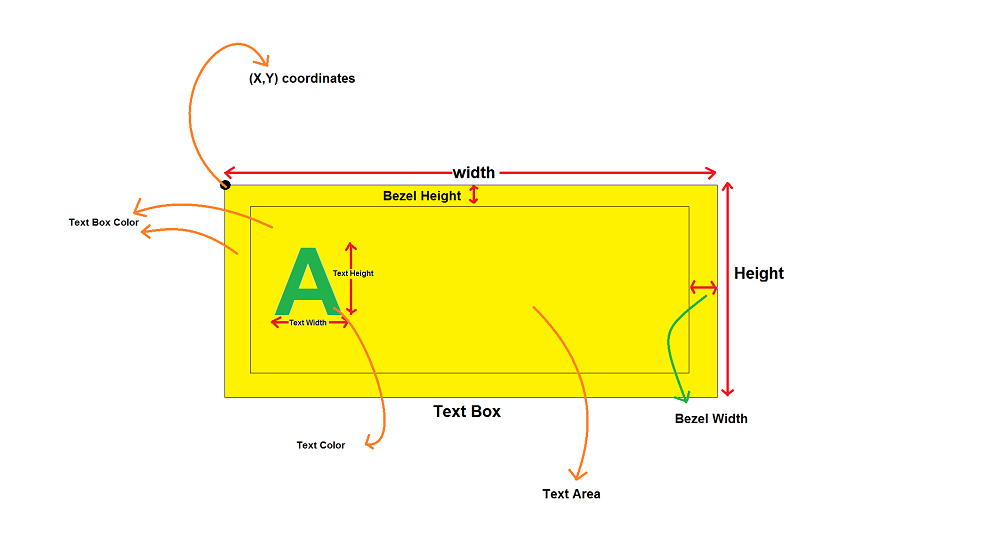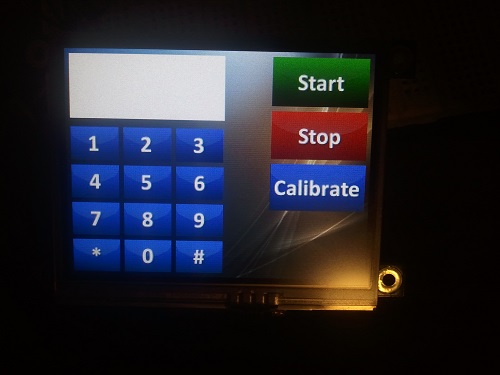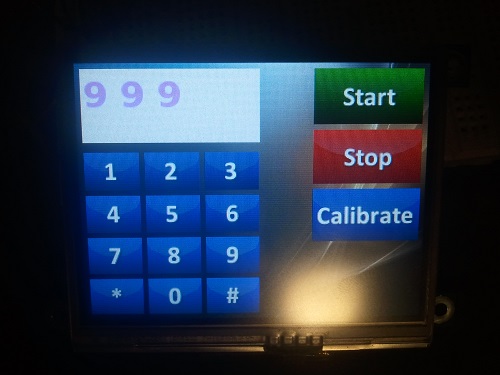|
ezLCD+103 Driver
0.1
Driver code for the ezLCD+103
|
|
ezLCD+103 Driver
0.1
Driver code for the ezLCD+103
|
Functions | |
| void | ezLCD_set_bitmap_font (uint8_t font_number) |
| void | ezLCD_set_true_type_font (uint8_t font_number, uint8_t height, uint8_t width) |
| void | ezLCD_init_putchar (uint16_t x, uint16_t y, uint16_t width, uint16_t height, uint8_t bezel_width, uint8_t bezel_height, uint8_t font_width, uint8_t font_height, uint8_t tb_red, uint8_t tb_green, uint8_t tb_blue, uint8_t text_red, uint8_t text_green, uint8_t text_blue) |
| void | ezLCD_putchar (char c) |
| void | ezLCD_putchar_bg (char c) |
| int | putchar (int c) |
| void | ezLCD_set_ttf_unicode_base (uint16_t base) |
This header contains functions used for both managing and rendering text.
The ezLCD+103 utilizes two different kinds of fonts: bitmap fonts (.ezf files) and true type fonts (.ttf) files.
Bitmap fonts are essentially just fixed images just like any other images the user may choose to render to the display. They cannot be scaled to larger sizes nor can they be printed with different colors.
Conversely, true type fonts (TTF) are vector fonts whose settings may be modified. These fonts are sensitive to the current color and and may dynamically change size.
The table below illustrates the differences between the two font types. For more information, see section 3.5 in the EZLCD+ External Commands Manual
html font_diff.png "Difference between bitmap and TTF fonts"
In addition to these differences, TTF uses the Unicode system and can have many different characters (currently over 110,000) while bitmap fonts only have a maximum of 256 characters (ASCII). The ezLCD_set_ttf_unicode_base() function allows us to access the many other characters available un Unicode.
To learn more about Unicode and to have a few laughs, please click here.
| void ezLCD_init_putchar | ( | uint16_t | x, |
| uint16_t | y, | ||
| uint16_t | width, | ||
| uint16_t | height, | ||
| uint8_t | bezel_width, | ||
| uint8_t | bezel_height, | ||
| uint8_t | font_width, | ||
| uint8_t | font_height, | ||
| uint8_t | tb_red, | ||
| uint8_t | tb_green, | ||
| uint8_t | tb_blue, | ||
| uint8_t | text_red, | ||
| uint8_t | text_green, | ||
| uint8_t | text_blue | ||
| ) |
Initialization function for putchar(). An initialization function is needed for putchar() because we must first define the portion of the current frame in which we want to write characters. Just like the ezLCD_set_edit_rect() function is used to define the area which is editable by the ezLCD_replace_color() function, the goal of this function is to define the allowable area in which putchar() may write to. The diagram below illustrates the necessary parameters for this function.

This function also draws the text box to the current frame. See the image below:


| void ezLCD_putchar | ( | char | c | ) |
Places a single character on the current frame. *
| void ezLCD_putchar_bg | ( | char | c | ) |
Places a single character on the current frame backed with a background color set by ezLCD_set_background_color().
| void ezLCD_set_bitmap_font | ( | uint8_t | font_number | ) |
Sets the desired bitmap font as the current font.
Sets the desired TTF font as the current font.
| void ezLCD_set_ttf_unicode_base | ( | uint16_t | base | ) |
Used to set the TTF Unicode base. TTFs consist of many different characters that need to be addressed; however, it is desirable to only send one byte to the display whenever possible. It is also desirable to use the same text writing functions for both bitmap fonts and TTFs. In order to do this, we need to set different base characters in order to access different characters using an 8-bit code. Suppose we want to print some foreign letters to the display. More often than not, this character will reside very high up in the Unicode character set. Suppose we want to write the capital Greek letter delta to the current frame. Capital delta's Unicode mapping is U+0394 (or decimal number 916) where 0394 is in hexadecimal. Clearly, we cannot simply address this letter with an 8-bit code directly.
Instead, what we can do is add an offset to the character base. That is the role of this function. Since delta is 0x394 in Unicode, we can set the base character to 0x394 and then print out character 0 as follows (assume that ezLCD_init_putchar() has already been called for simplicity):
We could also print capital delta by setting the base character to 0x394-1 = 0x393 or 915 decimal. Then we could print character 1 as follows:
In either case, the same character delta is printed to the frame. This scheme gives us access to the base character and the 255 characters above it in the Unicode table.
For a complete listing of Unicode characters and their encodings, please click here.
| int putchar | ( | int | c | ) |
Places a single character on the current frame bound by the text box created with ezLCD_init_putchar(). The reason for bounding the text to a single area is so that printf() will work as expected. The newline character will force a line feed and a carriage return just like an old typewriter. When the end of the bounded region is reached the text box will be cleared and text will be written from the top-left corner once again.
 1.8.5
1.8.5